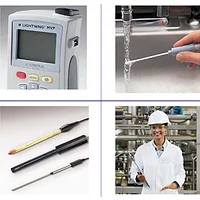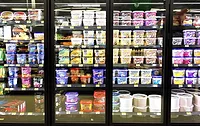The Importance of Quick and Accurate Communications during Food Recalls
Product recalls are very frequent occurrences. The U.S. Consumer Product Safety Commission (CPSC) recalls around 320 products a year, each product recall provoking hundreds of thousands of dollars in losses. According to the CPSC, property damage, injuries and deaths caused by consumer product-related incidents cost the U.S. over $700 billion annually. Furthermore, product recalls can also reduce trust in the manufacturers and permanently damage a brand name, affecting a large number of products in the case of private labels. There are therefore many incentives for all the parties involved to attempt to reduce the number of product recalls and the negative consequences of such events.
Food recalls, in particular, have very high stakes. Identifying and solving food crises can be extremely complicated due to the number of suppliers, manufacturers and distributors involved. Communication is one of the most important factors at play during a product recall. The only way to mitigate damages caused by a food crisis is to swiftly communicate the problem to the consumers and to present them with a solution. Proper communication can lessen the adverse impact on a company’s reputation and, possibly, even save lives. With this in mind, it becomes the number one priority to communicate all necessary information to the consumer. For this to be possible, companies must work rapidly to accurately identify the problem and to determine a plan of action. With the proper technology, retailers and manufacturers are now able to detect and locate the contaminated batch.
While speed is critical when handling such crises, it can clearly not be advanced at the expense of accuracy. The problem must be diagnosed precisely and without errors. The most common mistakes companies make when recalling a food product occur during the identification process. For instance, they might overlook batch numbers that should actually be included in the recall, or they might improperly identify the source of the problem. Such mistakes can be disastrous.
The crisis involving contaminated batches of pepper imported into the UK was one of the most publicized events of this sort in recent years. A number of the batches were contaminated with Sudan Red, which is believed to be a carcinogenic dying agent. During this episode, it took several days to identify all the possible contaminated products and the communication to the public was a disaster. The reports were continually being changed, updated and repeated throughout the week. Neither speed nor accuracy was achieved, which led to confusion and fear on the public’s end, and had catastrophic repercussions for the retailers and manufacturers.
When a crisis is caused by a transversal component (e.g., a raw material from a specific origin), such as the UK pepper episode, it is often more efficient to identify and withdraw finished products containing this component rather than waiting for detailed batch-by-batch analysis. It is important to keep in mind that, when faced with a risk, consumers will reject all batches of the product affected regardless of whether they are contaminated or not. Moreover, stores must face daily recalls and are usually unwilling to sort through individual batches unless paid by the manufacturer for this extra service. Stores will instead opt for a more drastic yet more efficient solution by sending all the batches back.
E-collaborative solutions exist to manage product information and to identify contaminated products within minutes. These solutions make it possible to associate recall alerts to potentially contaminated products quickly and accurately.Unfortunately, no traceability system is infallible. Ensuring that a specific batch contains or doesn’t contain a specific raw material or component is tricky and sometimes not compatible economically. Thus, it becomes evident that the most efficient and safe tactic is to simply remove all products containing the ingredient for which a risk has been detected.
A number of retailers and manufacturers are testing new tactics that could accelerate the process of notifying consumers about product recalls. Conducting mock recalls can benefit a company by making all the people involved aware of their responsibilities. This process can potentially increase accuracy and save precious minutes in the event of an actual food recall. Additionally, a company might decide to use store cards to track each product purchased back to an individual consumer. If a consumer purchased a package of lettuce, this information would automatically write itself into the retailer’s database. Hence, in the event of a food recall, the retailer could contact you directly about the problem. This operation could be accomplished automatically through a voice message sent out to the customers implicated. The retailer would, hence, waste very little time and increase the customers’ trust in his reliability.
Food recalls are inevitable, however, and there are many means by which companies can simultaneously protect their consumers and their reputation. Companies using the right technology have the ability to identify the exact nature of a crisis and to determine the solution to enable the company to communicate the necessary message to the public as rapidly as possible.
Jerome Malavoy is the founder and CEO of Trace One. Created in 2001, the company is now recognized as the leader in e-collaborative solutions for managing private label food and non-food products for retailers and manufacturers in all categories.
Looking for quick answers on food safety topics?
Try Ask FSM, our new smart AI search tool.
Ask FSM →








